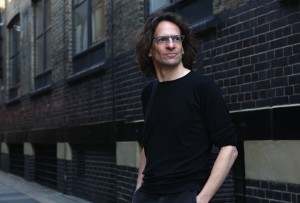
After more than 40 years of operation, DTVE is closing its doors and our website will no longer be updated daily. Thank you for all of your support.
Zeebox ups on-demand focus
Second screen app Zeebox is looking to up its focus on on-demand viewing as ‘second screen’ interaction makes way for ‘participation TV’, according to company co-founder Anthony Rose.
Speaking at the OTTtv World Summit last week, Zeebox chief technology officer and co-founder Rose said that though Zeebox’s initial focus was on interacting with live television, “there is a growing area of bringing synchronised experiences around on-demand.”
“The buzzword for the future isn’t just ‘second screen’. It’s for me really ‘participation TV’, which has been part of the show, whether it’s on-air or not on-air. Increasingly everything is going to be in one place,” said Rose.
As part of its service Zeebox offers a ‘replay tweets’ function that allows viewers that are watching a TV show on-demand to see the tweets that were generated during the live broadcast. Rose said that this is already producing engagement that is “two or three times longer” than with a live twitter stream, which outside of the linear broadcast will not contain such pertinent messages.
Zeebox now aims to enhance this service with “a slightly more obvious timeline that makes it really obvious that what you’re seeing is synced to that moment in the show,” said Rose.
He said Zeebox is also keen to make its experience available everywhere through its APIs – “whether you’re watching on a set-top box or a TV” – something that will become increasingly important as TV makers start to try and develop their platforms to be able to detect what is on TV and offer services on top of that.
“If you look at the evolution of second screen, I think once upon a time, people sat in front of their TVs and just watched. Then along came the dot.com kids and they came up with cool apps… and people could connect with each other around the shows. But the broadcasters made the same shows that they’ve always made, and that’s pretty much where we’re at today,” said Rose.
“But from our engagement with broadcasters, and other companies’ engagements with broadcasters, I think we’re beginning to see the next step, and the next step is to take some of these experiences, which are today happening on the second screen, and put them back onto the TV.”
“I think the step after that is for the shows themselves to begin to change. At the moment, when there is integration with the TV it’s often a thin veneer painted on top, and that is going to lead to some potentially big shifts and some battles in the space between TV manufacturers and broadcasters and set-top box manufacturers.”



